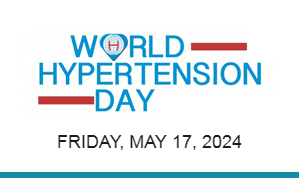June 18, 2007 – Milan, Italy – Olmesartan was associated with a greater reduction in the secondary endpoint of plaque volume in patients with a baseline volume above the median level, compared to treatment with atenolol, while the reductions in the primary endpoint of changes in carotid intima media thickness were similar with both drugs. Both drugs produced a similar reduction in blood pressure in the MORE study. Prof. K. Stumpe, Bonn, Germany, stated that the finding of a difference in the reduction of plaque volume suggests that olmesartan has an anti-atherosclerotic effect that is independent of blood pressure lowering.
Although experimental evidence has suggested that angiotensin-receptor blockers (ARBs) have an anti-atherosclerotic action, independent of its antihypertensive effect, in human hypertension the effects of an ARB on atherosclerotic plaque had been unknown. The 2-year MORE study examined the effects of olmesartan (n=78, 20-40 mg daily) and atenolol (n=76, 50-100 mg daily) on changes in intima-media thickness (IMT) using 2-dimensional ultrasound on the volume of plaque in common carotid artery (CCA) in persons with hypertension at high-risk for cardiovascular (CV) events. In this multicenter, randomized, double-blind study, hydrochlorothiazide (12.5-25 mg) was added as needed to reach blood pressure (BP) target levels.
The primary endpoint was change from baseline in CCA IMT after 2 years of treatment, and major secondary endpoints were change from baseline in atherosclerotic plaque volume (PV), overall mean IMT, and systolic and diastolic BP.
A marked reduction in clinic seated blood pressure (3.1/1.4 mmHg) was found in both groups.
At baseline, the patients in both groups were similar, except in the atenolol group compared to the olmesartan group, there were more men (73% compared to 50%, respectively), more smokers (38% compared to 31%, respectively), and more cardiovascular (CV) disease (13% compared to 9%). The patients were 62 years old on average, BMI of 27 kg/m2, and blood pressure 157/96 mmHg. Duration of hypertension was about 8-9 years and 60% were being treated at baseline. About 30% of patients were taking statins.
At 2 years, the reduction in IMT was significant, but not different in the two treatment group. The mean change in IMT was -0.09 mm and -0.08 mm in the olmesartan and atenolol groups, respectively; the baseline IMT in the groups was 0.984 mm and 0.968 mm, respectively.
The mean change in IMT was dependent on the baseline IMT, with a greater reduction found in patients with an IMT >/=0.93 mm (-0.126 mm and -0.109 mm, olmesartan and atenolol respectively). In the patients with an IMT </=0.93 mm, the mean reduction was
-0.046 mm and -0.055, olmesartan and atenolol, respectively).
Plaque volume was reduced by 4.4 mm in the olmesartan group and 0.1 mm in the atenolol group. The baseline values were 49.7 mm and 50.5 mm, respectively, and the values at 2 years were 45.3 mm and 50.8 mm. The change in PV was significantly correlated to baseline PV in the olmesartan group. A post-hoc analysis performed to explore this relationship showed in the patients with a PV above the median of 33.7 µl at baseline, there was a significant difference at 2 years in the mean change in PV. This difference was evident at 28 weeks and continued, and was significant at 52 weeks.





